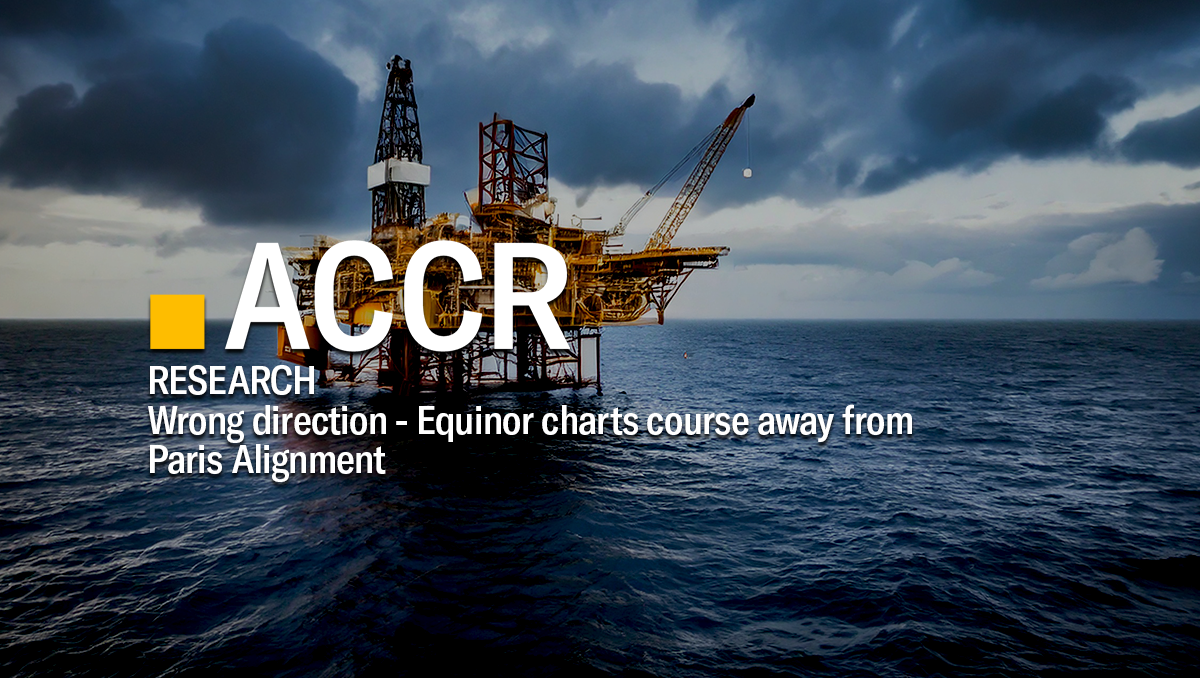Publication Wrong direction - Equinor charts course away from Paris Alignment
Executive summary
Despite the formal expectation of its majority shareholder - the Norwegian government - that Equinor “sets targets and implements measures to reduce greenhouse gas emissions in both the short and long term in line with the Paris Agreement,”[1] the company is not moving towards Paris alignment.
Equinor’s strategy includes sanctioning further oil and gas projects, principally outside of Norway. Yet there are already enough sanctioned oil and gas projects globally to consume the remaining Paris-aligned carbon budget – which means there is no room for new oil and gas developments in line with the Paris Agreement.
Equinor’s international projects have a history of chronic financial underperformance. In the context of a forecast peak in oil and gas demand, international production growth is an increasingly high-risk strategy.
Minority shareholders have raised concerns about the inconsistency between Equinor’s oil and gas expansion plans and the expectations of its majority shareholder. A shareholder resolution asking the Board to assess and explain this inconsistency has been co-filed at the 2025 AGM.
Equinor can course correct. Ceasing international oil and gas developments would significantly improve the alignment of Equinor’s strategy with the goals of the Paris Agreement. Based on the sustained financial underperformance of its international segment, this may also increase shareholder value.
Key findings
- Equinor’s majority owner – the Norwegian government – expects Equinor to be Paris-aligned. However, Equinor is moving away from, not towards Paris alignment:
- The remaining carbon budget (RCB) shows there is no room for new oil and gas developments in line with the Paris Agreement – which means Equinor’s plans to increase international production by 40% between 2024 and 2030 can not be Paris-aligned.
- Equinor’s net carbon intensity (NCI) ambitions[2] are too timid to be Paris-aligned and have recently been weakened further. Its plans to meet its NCI targets are not convincing
- Equinor’s sanctioned international oil and gas projects have not been value accretive. Our modelling shows that Equinor’s international projects have consumed ~$100 billion[3] of capex, but delivered a negative $3.6 billion Net Present Value (NPV)
- Like the rest of the oil and gas sector, Equinor’s total shareholder returns (TSR) chronically underperform the broader equities market. In the context of a forecast peak in oil and gas demand, international production growth is an increasingly high-risk strategy.
- We found that Equinor’s new international projects are, on average, not low-cost, with over 70% of global unsanctioned oil and gas supply having a lower break-even price.
- Equinor has claimed to be ‘improving’ and ‘optimising’ its international portfolio since 2013. Since this time, its returns have deteriorated. Its claims of strong future returns in the international business should be viewed sceptically.
- Ceasing international development could move Equinor towards the Paris alignment that its majority owner expects without materially risking shareholder value.
Download a PDF of Wrong direction - Equinor charts course away from Paris Alignment | 22/04/25
Please read the terms and conditions attached to the use of this site.
Minutes of Annual General Meeting, 10 May 2023 at point 9, Statement of the Ministry of Trade, Industry and Fisheries read by the company's Chair at the Equinor's 2023 AGM. ↩︎
Equinor has climate ‘ambitions’ – a lesser commitment than a target. ↩︎
All references to currencies are US$ unless otherwise stated. ↩︎
